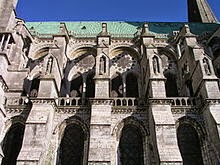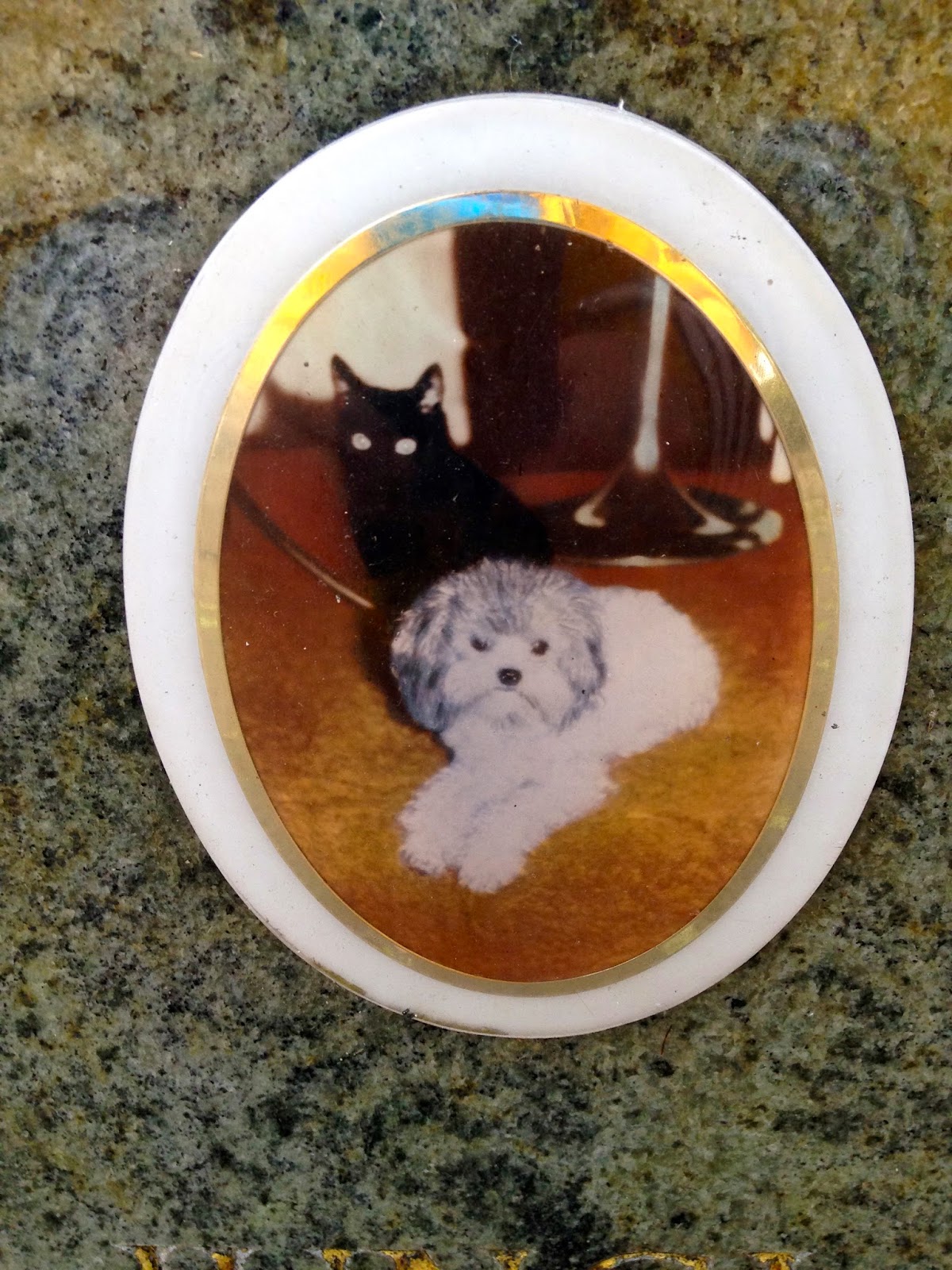The Cathedral is in sight as you exit the station and it's about a 5-6 minute walk straight up a hill.
The exterior of the church is stunning. It was the 4th or 5th church built on this site. In 1194 a fire destroyed the church that was then on the site and the present church was built in only 60 years--Notre Dame in Paris took centuries!
This is the west entrance--or the royal portal. Below you will see Mary with the Christ Child on her lap. Those skinny guys beneath are the kings and prophets who foretold the coming of Christ.
This carving represent Christ surrounded by four animals--I'm told they symbolize the four apostles Matthew, Mark, Luke, and John. It looked life there was an angel, a lion (with wings), a bull (with wings) and an eagle (obviously with wings). You can decide who is who, but the word for today is: Tetramorph, find a way to use it three times in a sentence today and it will belong to you forever!
I am told that Chartres Cathedral was the first to use flying buttresses to support the soaring ceilings--120 feet/40 meters high in the nave.
But most of the visitors were inside the church looking at the . . . stained glass, more than 26,910 square feet/2500 square meters of it. Most of stained glass (more than 80% of it) dates from the 12th and 13th centuries (most of Chartres stained glass was completed in 1230), and is probably the world's largest collection of medieval stained glass. During the world wars, the glass was removed and hidden. In World War II, citizens removed all the windows and buried them in Dordogne cellars. Sandbags were piled up to protect the statutes which is why Chartres is the best-preserved medieval cathedral in Europe.
I went inside to wait for the noon tour by Malcolm Miller. Sadly there were only two of us (and there need to be a dozen to get the mike and ear phones) and Mr. Miller said it was just too loud with the renovations going on to do the tour. He was kind enough to stay and chat with us for about 15 minute though and we talked about the Cathedral, it's history and significance, and his more than 50 years of scholarship and giving tours here--since he was 24 years old! He was charming and gracious and I'm sorry to have missed his tour.
Here are some of the photos of the interior of the church, the choir screen and many of the windows. My little iPhone camera did a good job, but I borrowed the pictures of the rose windows and the Blue Virgin from the internet--I just couldn't get the detail and clarity they deserved. The less spectacular photos are my own.
Here is the Blue Virgin and the origin of the color, "Chartres blue."
The two rose windows first the north door window,
Some other windows via my iPhone:
The choir screen depicting the life of Mary (and of course Christ). There were many scenes I wasn't able to identify--I needed the help of a biblical scholar I suppose.
But here are a couple. I think this first is the nativity.
This is the circumcision of Christ.
And these fellows look to be the three kings (the Magi).
Outside again, I am reminded that the cathedral is one of the stopping points on the Way of Saint James or the Camino di Santiago, if the pilgrims are walking from Paris to Spain.
I went to find the oldest church in town, the Church of St. Aignan. This was the parish church of the local folks living in Chartres. The exterior is plain but the interior is lovely and colorful. And they have a stained glass window or two as well.
Then I continued down the hill to the river Eure and wakied along the river bank for a while.
Do you see the love birds?
Then back to the train station and back to Paris. Tired but happy.
































































